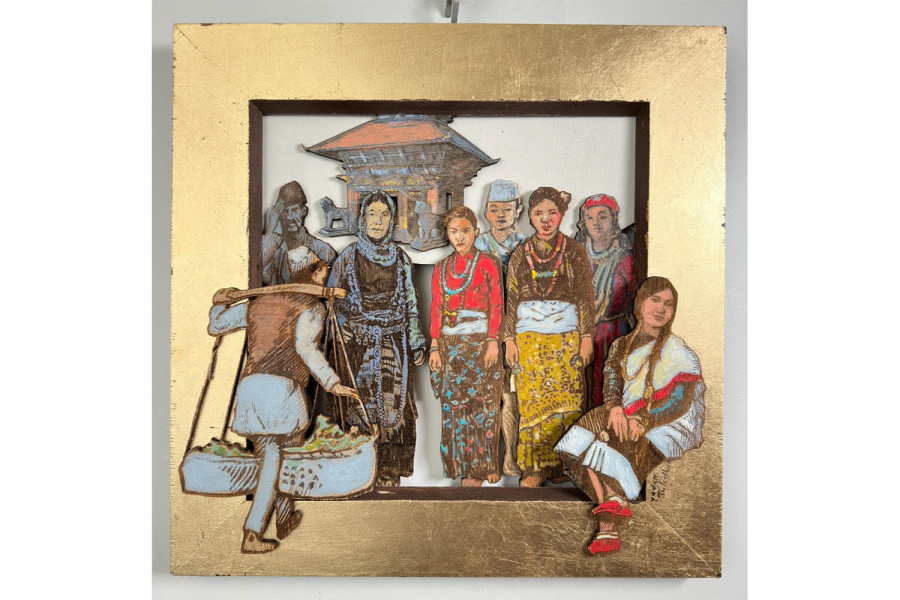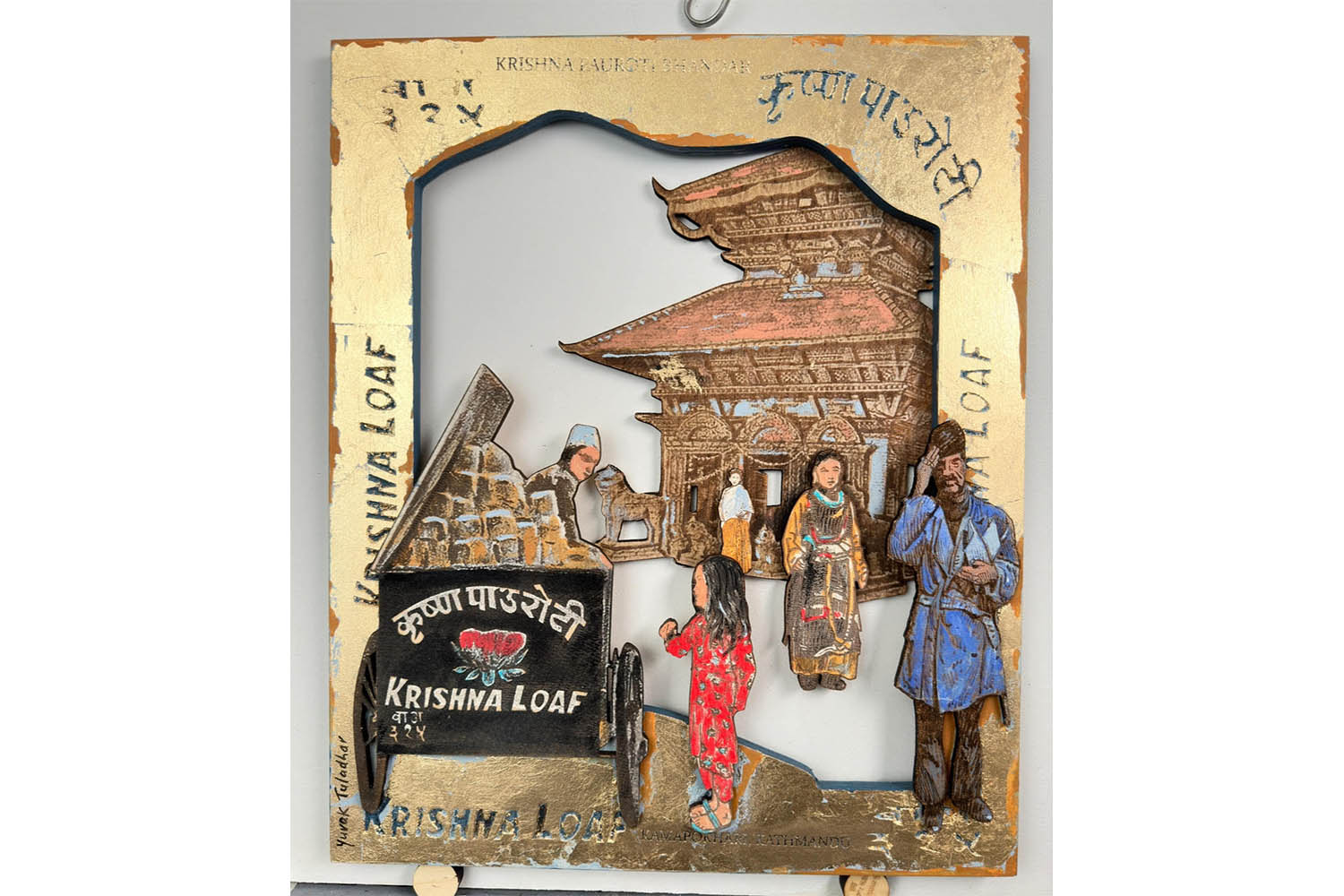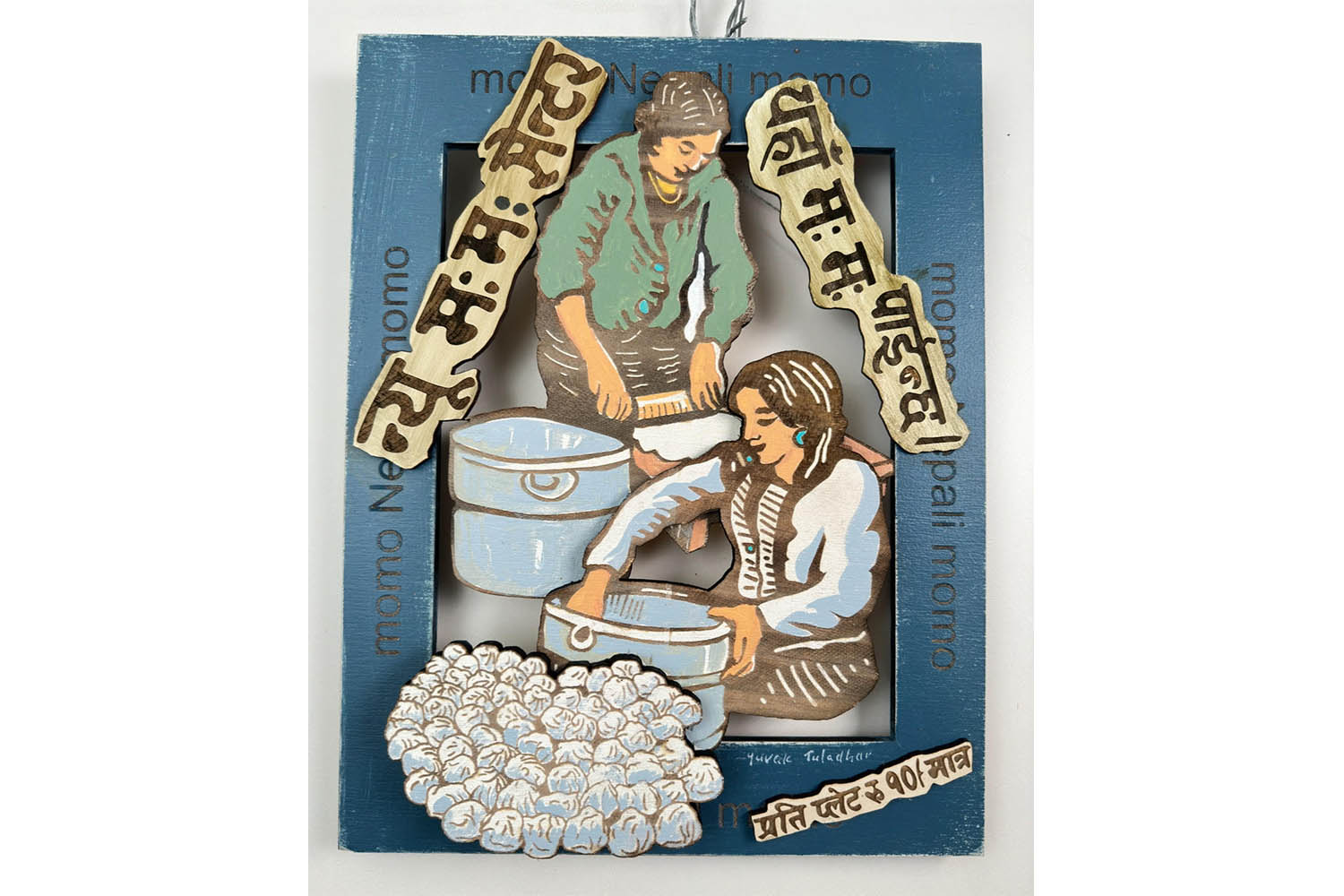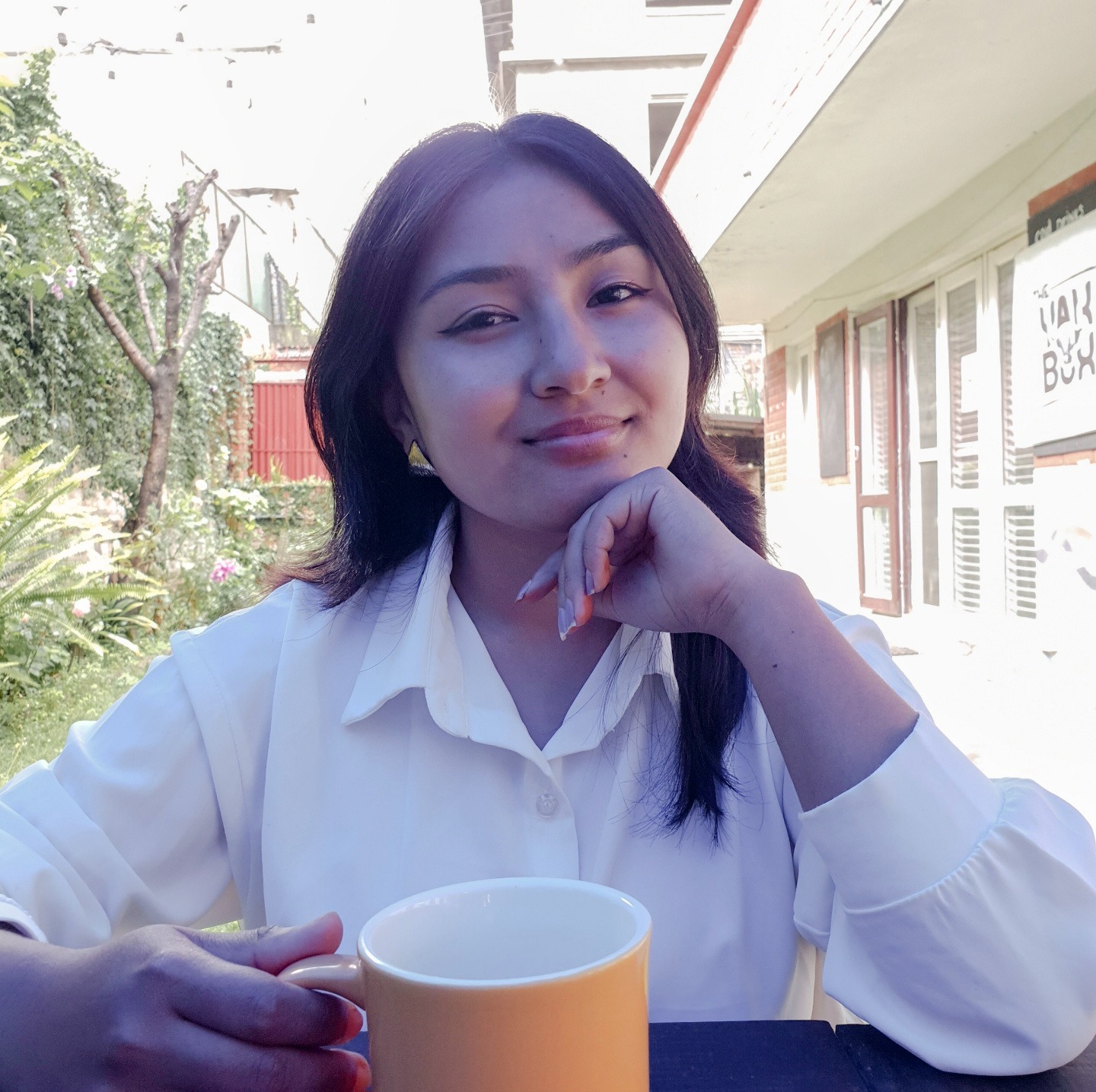Arts
Nostalgic tribute to hometown
Yuvak Tuladhar’s ‘Memories of Kathmandu’ at Takpa Gallery blends childhood memories of 1970s Kathmandu with innovative techniques.
Timila Maharjan
The ongoing exhibition ‘Memories of Kathmandu’ at Takpa Gallery, Lazimpat, is a nostalgic journey into the past, presented by artist Yuvak Tuladhar. After spending three decades in California, Tuladhar has returned to Nepal for his fifth solo exhibition, drawing inspiration from his childhood memories in Kathmandu.
Raised in Asan, his 32 artworks are about his experiences from the 1960s to the 1990s. Each piece transports viewers to Kathmandu in the 1970s, capturing the era’s cultural richness and everyday life.
Tuladhar’s journey as an artist began early. As a child, he spent time at Bal Mandir, where his passion for art deepened through access to free art supplies and lessons. His talents were soon recognised, earning him the first prize at an annual competition organised by Bal Mandir. This led to an unforgettable opportunity to travel to Russia in 1977 for an international art camp called Artek. Early recognition and exposure set the foundation for his later studies, including an MFA in Textile Art at the prestigious Savannah College of Art and Design, Georgia, funded by a Fulbright Scholarship.

After a 14-year hiatus from art, Tuladhar rekindled his passion in 2010, and in this latest exhibition, he demonstrates his willingness to experiment. His work combines traditional techniques with modern tools, such as the scroll saw and laser engraver, giving him what he describes as “more freedom and flexibility to play with his art.” In this exhibition, Tuladhar employs a variety of mediums, including painting, drawing, carving, sewing, and even incorporating postage stamps into his pieces, which serve as a recurring motif throughout the show. As he explains, these stamps are one of the most prominent memories of his childhood in Kathmandu, a nod to his passion for philately as a boy.
One of the most striking works in the exhibition features various Newa characters, a piece that initially seemed to depict a bride being escorted to her new home. However, upon closer inspection and with the artist’s explanation, it becomes clear that these figures are involved in different activities, creating a rich tapestry of life in the valley. Including actual postage stamps in this painting adds a layer of nostalgia and intrigue. Tuladhar’s creative use of these stamps—some of which resemble the form of postage stamps themselves—offers a unique commentary on everyday life in Kathmandu, a theme he expands on by featuring ordinary people in his works, such as those making tea, fetching water, or selling radishes. “We usually see postal stamps featuring kings, mountains, or animals,” He notes, “But I wanted to celebrate the everyday people who light up the city.”
The artworks span a range of memories, from vintage public buses adorned with slogans to scenes of hashish shops that were once a popular haunt for the hippie crowd when hashish was legal in Nepal. The richness of these memories is further amplified by Tuladhar’s choice to include notes—written in Nepali and Newa language—alongside some pieces, providing personal context to the stories depicted. One recurring figure throughout the exhibition is a homeless person from the Rana family, whom he calls the “Homeless General.” Unlike typical beggars, this man carried himself with an air of dignity and class, fluent in English and known for composing poems for tourists. “He was a fascinating character,” Tuladhar recalls, “And tourists often sought him out. That’s why I placed him in different artworks around Kathmandu.”

Another memorable piece depicts two women making momo with a sign reading ‘New Mo:Mo Centre’. Tuladhar explains that momo was not as popular then and was made with small utensils. The iconic ‘Shandar Mo:Mo’ was the first to use larger pots to prepare the dish. “The trend of adding ‘New’ to shop names became common as businesses tried to ride on the success of popular establishments,” he says, adding a touch of humour to his recollections.
The exhibition also pays homage to Tuladhar’s familial ties. One artwork features the Bajrabarahi Temple in Chapagaun, depicted in an 1880 drawing by a British artist, with his grandmother appearing alongside a bride. He explains that his grandmother worked as a marriage mediator, often taking him along on her visits, and this memory inspired the piece.
Another artwork captures a more unusual memory: a Limbu man marrying twin sisters, a scene he witnessed during his youth. Despite the illegality of polygamy, such events were not uncommon, and he found the situation both fascinating and reflective of the societal norms of the time.

The exhibition showcases the diversity of Kathmandu’s people and the vibrancy of life during Tuladhar’s childhood. Whether it’s the nostalgia of buying bread from Krishna Pauroti, the city’s first high-quality bakery, or the memories of bustling streets filled with public buses and hashish shops, Tuladhar’s art weaves a rich, multilayered portrait of Kathmandu’s long past. The use of modern tools such as the scroll saw and laser engraver in his pieces, despite being a recent addition to his artistic repertoire, has allowed him to explore new creative dimensions and elevate his work.
The exhibition was also motivated by his connection with Ang Tsherin Sherpa, whose studio is near Tuladhar’s home in California. Their discussions reignited his desire to exhibit in Nepal, which led to this show, his first in the country after three decades.
Tuladhar plans to incorporate the changes he has observed in Nepal since his return into his future work. “It’s been almost a month since I've been back, and it feels like a different country,” he reflects. “Everything feels like art, and I enjoy exploring the present-day Kathmandu.” Despite living abroad, his work continues to reflect the essence of Nepal, an ongoing love letter to the city he grew up in and the memories that shaped him.
‘The Memories of Kathmandu’ exhibition offers a beautiful exploration of personal and collective histories, bringing the artist’s childhood memories to life in vivid, multidimensional forms.
Memories of Kathmandu
Where: Takpa Gallery, Lazimpat
Until October 29
Time: Tuesday to Thursday: 11:00 am to 6:00 pm, Friday to Sunday: 11:00 am to 7:00 pm, closed on Monday
Entry: Free




 18.37°C Kathmandu
18.37°C Kathmandu










